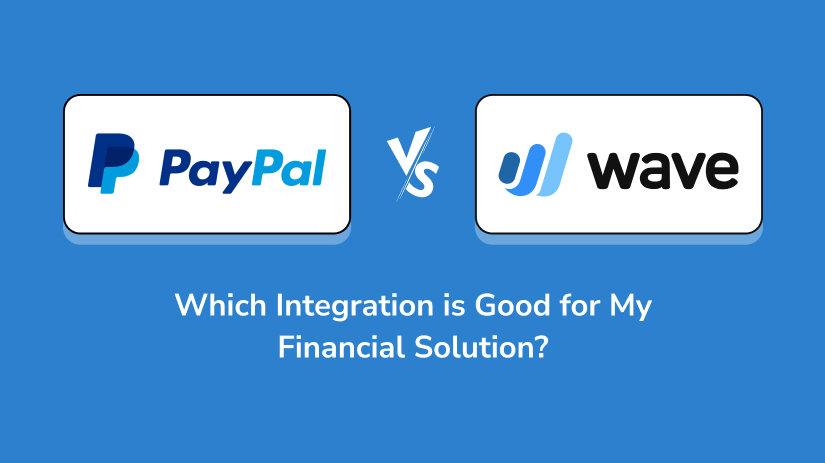In the realm of financial management, the integration of reliable payment gateways and seamless transaction processes is crucial. Among the myriad of options available, two prominent names often stand out: PayPal and Wave.
Both platforms offer distinct advantages, catering to various business needs and preferences.
However, the question remains: Which integration is better suited for your financial solution?
Let’s see!!
Exploring the Integration Dynamics of PayPal vs Wave
Before exploring the intricacies of each platform, understanding the basics of integrating PayPal and Wave into mobile payment app development is crucial. PayPal, a longstanding player in the online payment sphere, features an intuitive interface, worldwide reach, and strong security protocols.
Contrarily, Wave, rising as a notable contender, provides extensive financial services customized for small enterprises, encompassing invoicing, accounting, and payroll functionalities.
PayPal Integration: The Standard for Online Transactions
For many businesses, PayPal integration serves as the cornerstone of their online payment infrastructure. With its seamless checkout process and widespread acceptance, PayPal has become synonymous with e-commerce transactions. Whether you’re a small-scale entrepreneur or a large corporation, PayPal’s versatility makes it an attractive choice for streamlining payment processes.
When considering PayPal integration, it’s essential to evaluate its compatibility with your existing platforms and systems. PayPal payment gateway integration offers straightforward APIs and developer tools, allowing for easy integration with websites, mobile apps, and e-commerce platforms.
Additionally, PayPal for company accounts provides business-oriented features such as invoicing, recurring payments, and multi-currency support, catering to diverse business models and international transactions.
Wave Integration: Empowering Small Businesses
In contrast to PayPal’s widespread adoption, Wave integration targets a niche market of small businesses and freelancers seeking comprehensive financial management solutions.
As a financial software development company, Wave prioritizes simplicity, affordability, and scalability, making it an ideal choice for startups and micro-enterprises.
Wave payment gateway integration goes beyond basic transaction processing, offering an integrated suite of tools for invoicing, accounting, and expense tracking.
With Wave API integration, developers can extend its functionality and integrate it seamlessly into existing workflows and applications.
Moreover, Wave API Salesforce integration enables businesses to synchronize customer data, invoices, and transactions between Wave and Salesforce CRM, enhancing operational efficiency and customer relationship management.
Connect with us for Fintech Development Needs
Trusted by companies like Plaid, Yodlee, Codat.
Comparing PayPal vs Wave Integration
When weighing the pros and cons of PayPal vs Wave integration, several factors come into play, including cost, features, scalability, and target audience.
While PayPal excels in global reach and e-commerce compatibility, Wave stands out for its affordability, simplicity, and small business focus.
Cost-effectiveness
Wave’s pricing model, which offers free basic services with optional paid add-ons, makes it an attractive choice for budget-conscious businesses.
In contrast, PayPal’s transaction fees and currency conversion charges may be prohibitive for high-volume transactions or international sales.
Features and Functionality
While both platforms offer essential payment processing capabilities, Wave distinguishes itself with its comprehensive suite of financial management tools, including accounting, invoicing, and payroll services.
PayPal, on the other hand, focuses primarily on payment processing, with additional features available for business accounts.
Scalability and Flexibility
For growing businesses with evolving needs, scalability and flexibility are paramount. PayPal’s extensive network and developer-friendly APIs enable seamless integration with various platforms and systems, supporting business expansion and diversification.
However, Wave’s simplicity and user-friendly interface may be more suitable for small businesses seeking a hassle-free solution without the complexity of…
By harnessing the power of PayPal vs Wave integration, businesses can optimize their financial operations, streamline payment processes, and enhance customer satisfaction.
Whether you prioritize global reach, affordability, or comprehensive financial management tools, choosing the right integration for your financial solution is essential for long-term success.
Conclusion
The Paypal vs Wave comparison offers unique advantages and caters to different segments of the market. While PayPal remains the standard for online transactions and e-commerce, Wave stands out for its simplicity, affordability, and small business focus.
By evaluating your business needs, preferences, and growth trajectory, you can make an informed decision and harness the full potential of PayPal vs Wave integration for your financial solution.
If you’re looking to integrate PayPal or Wave into your financial software or mobile payment app, consider partnering with a reputable financial software development agency or hire fintech experts with experience in payment application development.
With their expertise and insights, you can navigate the complexities of payment gateway integration, maximize functionality, and drive business growth in the ever-evolving landscape of digital finance.
Happy Paypal & Wave Integration!!
Connect with us for Fintech Development Needs
Trusted by companies like Plaid, Yodlee, Codat.





